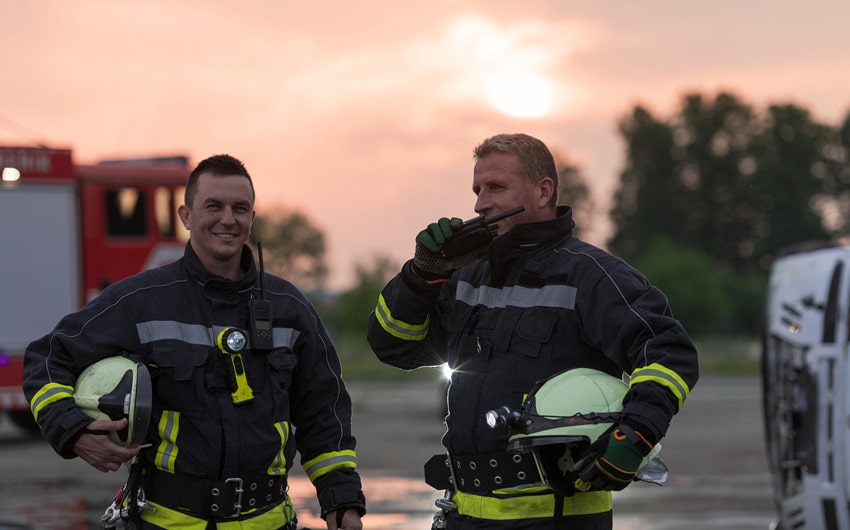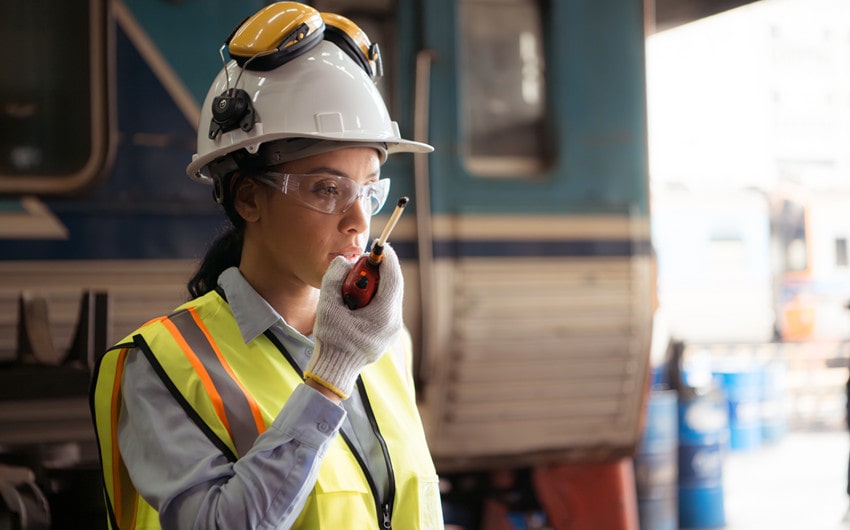Learn 103 Walkie Talkie Phrases and Lingo for Effective Use
Effective communication is crucial, especially when using walkie talkies in various settings like events, construction sites, or emergency situations. Knowing the right walkie talkie phrases and lingo can make all the difference in ensuring clear and efficient exchanges. Whether you’re a beginner or looking to brush up on your skills, understanding these key terms will help you stay connected and avoid misunderstandings.
Let’s explore some essential phrases and lingo that will enhance your walkie talkie communication and keep conversations smooth and professional.

Common Walkie Talkie Phrases
Clear and concise communication is key when using walkie talkies. Familiarizing yourself with common phrases ensures that messages are understood quickly and accurately. Here are some essential walkie talkie phrases and their meanings:
1. “Over”
Indicates that you have finished speaking and are waiting for a response.
Example: “I’ll meet you at the entrance, over.”
2. “Copy”
Means that you understand and acknowledge the message.
Example: “Copy that, I’ll be there in five minutes.”
3. “Roger”
Another way to say that you have received and understood the message.
Example: “Roger, I’ll handle it.”
4. “Wilco”
Short for “Will comply.” Indicates that you have received the message and will follow the instructions.
Example: “Wilco, I’ll send the report immediately.”
5. “Affirmative”
Yes or agreement with the statement.
Example: “Affirmative, the package has been delivered.”
6. “Negative”
No or disagreement with the statement.
Example: “Negative, the meeting hasn’t started yet.”
7. “Stand by”
Wait or pause for a moment.
Example: “Stand by, checking the details now.”
8. “Go ahead”
Indicates that the other person can proceed with their message.
Example: “Go ahead with your update.”
9. “Say again”
Request to repeat the previous message.
Example: “Say again, I didn’t catch that.”
10. “Break”
Used to pause a conversation and start a new one with a different person without ending the current transmission.
Example: “Meeting starts at 3 PM. Break. Team B, are you ready for the presentation?”
11. “Clear”
Indicates that you are done with the conversation and the channel is free for others to use.
Example: “The task is complete, clear.”
12. “Do you copy?”
Asking if the other person has received and understood the message.
Example: “We’re moving to the next location, do you copy?”
13. “Mic check”
Testing if the microphone and transmission are working properly.
Example: “Mic check, can you hear me?”
14. “Loud and clear”
Confirming that the message was received clearly.
Example: “I hear you loud and clear.”
15. “Over and out”
Indicates that the conversation is complete and the channel is now free.
Example: “I’ll see you at the site, over and out.”
16. “All clear”
Signifies that the area or situation is safe.
Example: “All clear, you can proceed.”
17. “ETA” (Estimated Time of Arrival)
Asking or providing information about when someone or something is expected to arrive.
Example: “What’s your ETA for the meeting?”
18. “Acknowledged”
Confirmation that the message has been received and understood.
Example: “Acknowledged, moving to the next task.”
19. “Out”
Signifies the end of your transmission.
Example: “We’ve completed the setup, out.”
20. “Break, break”
Indicates an urgent message that needs immediate attention, interrupting ongoing communications.
Example: “Break, break, there’s an emergency at the north entrance.”
Emergency Phrases
In emergency situations, clear and precise communication is critical. Using specific phrases can help convey urgency and ensure that everyone understands the gravity of the situation. Here are some essential emergency walkie talkie phrases and their meanings:
1. “Mayday”
An international distress signal indicating a life-threatening emergency.
Example: “Mayday, mayday, we have a man overboard!”
2. “SOS”
A distress signal used to indicate an emergency situation.
Example: “SOS, we need immediate medical assistance!”
3. “Man Down”
Indicates that someone is injured and requires immediate assistance.
Example: “Man Down, we need help at the construction site.”
4. “Code Red”
Indicates a critical emergency, often used for fire or severe danger.
Example: “Code Red, everyone evacuate immediately!”
5. “Emergency Traffic”
Used to indicate that the communication channel should be cleared for emergency messages only.
Example: “Emergency Traffic, we have a serious accident on site.”
6. “Help Needed”
A direct call for immediate assistance.
Example: “Help needed at the north entrance, someone’s injured!”
7. “Priority”
Indicates that the message is urgent and should be given immediate attention.
Example: “Priority, there’s a security breach in the main hall.”
8. “Medical Emergency”
Used to signal that there is a medical situation requiring urgent attention.
Example: “Medical Emergency, we need a paramedic at sector 4.”
9. “All Units Respond”
A call for all available units to respond to the emergency situation.
Example: “All Units Respond to the warehouse, there’s a major gas leak.”
10-Codes
10-codes are shorthand radio communication codes used to convey specific information quickly and clearly. These codes are widely used by law enforcement, emergency services, and other industries to ensure concise and efficient communication. Here are some common 10-codes and their meanings in correct numerical order:
1. “10-1”
Poor signal strength or communication quality.
Example: “10-1, I can barely hear you.”
2. “10-4”
Acknowledgment or affirmation; means “OK” or “Roger that.”
Example: “10-4, I understand your instructions.”
3. “10-7”
Out of service or off duty.
Example: “Unit 12 is 10-7 for the night.”
4. “10-8”
In service or available for assignment.
Example: “Unit 5 is 10-8 and ready for duty.”
5. “10-9”
Request to repeat the last message.
Example: “10-9, please repeat your last transmission.”
6. “10-17”
En route to a specified location.
Example: “10-17 to the office for a meeting.”
7. “10-18”
Urgent; complete assignment quickly.
Example: “10-18, we need those reports as soon as possible.”
8. “10-19”
Returning to the station.
Example: “Unit 4 is 10-19 to the base.”
9. “10-20”
Requesting or providing the location of someone or something.
Example: “What’s your 10-20?” / “My 10-20 is Main Street.”
10. “10-21”
Call by telephone.
Example: “10-21 the supervisor for more details.”
11. “10-22”
Disregard the previous message or cancel the last transmission.
Example: “10-22 the previous request, it’s no longer needed.”
12. “10-23”
Arrived at the scene or location.
Example: “Unit 7 is 10-23 at the incident site.”
13. “10-27”
Checking driver’s license status.
Example: “10-27 for John Doe, please.”
14. “10-28”
Requesting vehicle registration information.
Example: “10-28 on the vehicle license plate ABC1234.”
15. “10-29”
Check for wanted or stolen status.
Example: “10-29 on that vehicle, see if it’s reported stolen.”
16. “10-32”
Person with a gun.
Example: “10-32 at the north entrance, proceed with caution.”
17. “10-33”
Emergency situation or urgent assistance needed.
Example: “10-33, we have a fire in the building!”
18. “10-35”
Confidential information.
Example: “10-35, approach with discretion.”
19. “10-36”
Correct time or providing the current time.
Example: “10-36, it’s 3:45 PM.”
20. “10-50”
Traffic accident.
Example: “10-50 on the highway, we need assistance.”
Phonetic Alphabet
The phonetic alphabet is a set of words used to represent each letter of the alphabet in voice communication. This system is crucial for ensuring clarity and avoiding misunderstandings, especially in noisy environments or over radio communication. Here is the complete phonetic alphabet along with examples of its use:
1. A – Alpha
Example: “My location is Alpha Bravo Charlie 123.”
2. B – Bravo
Example: “The package is at Bravo Delta 456.”
3. C – Charlie
Example: “Report to sector Charlie Echo 789.”
4. D – Delta
Example: “Proceed to checkpoint Delta Golf 101.”
5. E – Echo
Example: “The coordinates are Echo Foxtrot 202.”
6. F – Foxtrot
Example: “Move to position Foxtrot Golf 303.”
7. G – Golf
Example: “We are stationed at Golf Hotel 404.”
8. H – Hotel
Example: “Meet at the Hotel India 505.”
9. I – India
Example: “Check the area India Juliet 606.”
10. J – Juliet
Example: “The rendezvous point is Juliet Kilo 707.”
11. K – Kilo
Example: “Confirm at Kilo Lima 808.”
12. L – Lima
Example: “The document is at Lima Mike 909.”
13. M – Mike
Example: “Deliver to Mike November 010.”
14. N – November
Example: “Report status at November Oscar 111.”
15. O – Oscar
Example: “The target is Oscar Papa 212.”
16. P – Papa
Example: “Proceed to Papa Quebec 313.”
17. Q – Quebec
Example: “Secure the area Quebec Romeo 414.”
18. R – Romeo
Example: “Message received at Romeo Sierra 515.”
19. S – Sierra
Example: “Location is Sierra Tango 616.”
20. T – Tango
Example: “Head towards Tango Uniform 717.”
21. U – Uniform
Example: “The item is at Uniform Victor 818.”
22. V – Victor
Example: “Meet at Victor Whiskey 919.”
23. W – Whiskey
Example: “The point is Whiskey X-ray 020.”
24. X – X-ray
Example: “Check the coordinates X-ray Yankee 121.”
25. Y – Yankee
Example: “The base is at Yankee Zulu 222.”
26. Z – Zulu
Example: “End transmission at Zulu Alpha 323.”
Lingo for Specific Industries
Different industries have their own specialized walkie talkie lingo to ensure clear, efficient communication tailored to their unique needs and environments. Understanding and using this industry-specific lingo can greatly improve coordination and safety. Here are examples from various industries:
Security and Law Enforcement
1. “Code 1”
Routine response or non-urgent.
Example: “Proceed with Code 1 to the main gate.”
2. “Code 2”
Urgent, but not life-threatening.
Example: “Respond Code 2 to the parking lot disturbance.”
3. “Code 3”
Emergency response, use lights and sirens.
Example: “All units, Code 3 to the bank robbery in progress.”
4. “BOLO”
Be On the Look Out for a suspect or vehicle.
Example: “BOLO for a red sedan, license plate XYZ123.”
5. “10-78”
Requesting assistance.
Example: “10-78 at the south entrance, suspect resisting.”
Construction
1. “Hard Hat Area”
Area where hard hats are required for safety.
Example: “Reminder, you’re entering a Hard Hat Area.”
2. “Green Light”
Permission to proceed with an action.
Example: “You have the Green Light to start the excavation.”
3. “Toolbox Talk”
Brief safety meeting.
Example: “We will have a Toolbox Talk at 7 AM.”
4. “Clear the Decks”
Remove all equipment and personnel from the area.
Example: “Clear the Decks, crane operation starting now.”
5. “Bobcat”
Refers to a skid-steer loader.
Example: “Bring the Bobcat to the east side.”
Events and Hospitality
1. “House”
Refers to the main auditorium or event space.
Example: “Meet me in the House for sound check.”
2. “Front of House (FOH)”
Area where audience is seated.
Example: “FOH needs more lighting adjustment.”
3. “Back of House (BOH)”
Area behind the scenes, where staff and performers are.
Example: “BOH is ready for the next act.”
4. “Green Room”
Waiting area for performers or VIPs.
Example: “The guest speaker is in the Green Room.”
5. “Strike”
To dismantle or take down equipment.
Example: “We need to Strike the stage after the last performance.”
Aviation
1. “Niner”
Used for the number nine to avoid confusion with “five.”
Example: “Altitude at five thousand niner hundred feet.”
2. “Pan-Pan”
Urgent situation but not an emergency.
Example: “Pan-Pan, we have a minor technical issue.”
3. “Squawk”
Set a specific transponder code.
Example: “Squawk 7500 for hijacking.”
Film and Television Production
1. “Rolling”
Camera is recording.
Example: “Quiet on set, we’re Rolling.”
2. “Cut”
Stop recording.
Example: “Cut! Let’s reset for another take.”
3. “Martini Shot”
The last shot of the day.
Example: “Martini Shot coming up, let’s make it count.”
4. “First Team”
Main actors or performers.
Example: “First Team, please report to the set.”
5. “Wrap”
End of filming for the day or project.
Example: “That’s a Wrap, everyone! Great job!”
Maritime
1. “Port”
Left side of the ship when facing forward.
Example: “Move the cargo to the Port side.”
2. “Starboard”
Right side of the ship when facing forward.
Example: “Adjust the sails to the Starboard side.”
3. “Aye Aye”
Acknowledgment of an order.
Example: “Aye Aye, Captain, setting the course now.”
4. “All Hands”
All crew members.
Example: “All Hands on deck for docking procedures.”
5. “Bulkhead”
A dividing wall or barrier within a ship.
Example: “Secure the equipment near the Bulkhead.”







